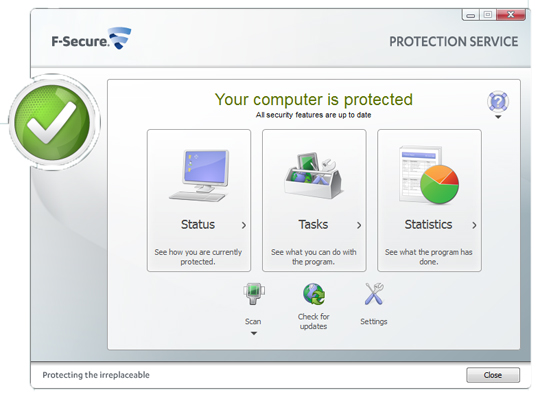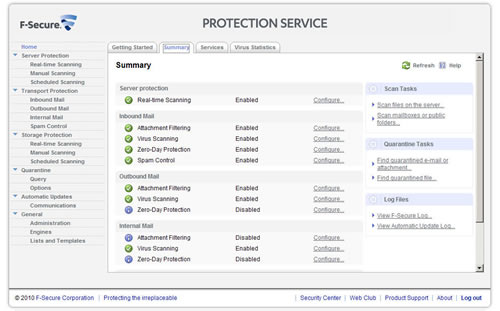Malwarebytes For Mac 10.6.8
Published November 7th, 2013 at 3:36 PM EST , modified July 15th, 2015 at 7:41 PM EST
Can I download a version of AVG Antivirus for Mac OS 10.6.8?Thanks.
- Download Malwarebytes for mac Anti-Malware is a free antivirus for mac, an excellent product which helps you in keep secure your computer (Mac PC Windows 10, Windows 7 ultimate and 8). Malwarebytes free download for mac comprises some useful extras, such as context menu integration, and also a secured file deletion tool is known as FileASSASSIN.
- Avira 2019 Antivirus For Mac Os X 10.6.8 Reviews. Like its competitors, Avira 2019 Antivirus For Mac Os X 10.6.8 has an “ultimate” package known as Prime that provides all its goods for a single price.
- On a system old enough to be capable of running 10.6.8, this very well could be a hardware failure. This is one major hazard of remaining reliant on such an old system: sooner or later, you're going to have to replace your hardware, and there's a dwindling supply of used hardware found in places like eBay that is capable of running 10.6.8.
Adware has been a plague on the Windows world for years. Unfortunately, this plague has begun to spread to the Mac as well. There are a number of different programs out there that serve no useful purpose except to shove ads in your face, all just to make money for the developer of the adware. Because it lives in the borderline between malware and legit software, though, detection by anti-virus software can be very hit-or-miss. This can make removal difficult.
Where does it come from?
Adware often comes packaged in installers for other software. Most often, this is because something was downloaded illegally from a torrent or piracy site. Sometimes it is because it has been added to a legit piece of software by an unscrupulous download site. (Even well-known download sites, such as Download.com and Softonic, have resorted to this kind of unethical behavior, and should never be used.) Other times it is because a developer has opted to use an adware-riddled installer, provided with incentives from the adware creator, to distribute their software. It could even be installed through deceit, by pretending to be something that it is not in order to trick the user into installing it. (This last type is usually the only type that is detected as malware by anti-virus software.)
What are the symptoms?
The most typical symptom of such adware is the display of advertisements on your Mac where none should exist. Adware also will often change your browser’s home page and search engine settings, and may even cause redirects from legit sites to sites constructed for the financial benefit of the adware developer. It can also cause secondary problems, such as web pages displaying incorrectly (due to insertion of foreign HTML code) or browser crashes.
However, problems with unwanted ads in the web browser are not necessarily caused by adware on your computer. They could also be caused by a compromised network or a problem with the site itself.
Before removing
Before you do anything to remove adware, you should back up your computer. There is some risk any time you try removing software like adware, and the risk is larger if you choose to try removing the adware manually if directions aren’t followed precisely. If you don’t already have your computer backed up, go buy yourself an external hard drive around 2 (or more) times larger than the used disk space on your computer’s hard drive, and use Time Machine to back up your computer to that hard drive.
Step 1: Scan with Malwarebytes Anti-Malware for Mac
Download and run Malwarebytes Anti-Malware for Mac. (MBAM for Mac requires Mac OS X 10.7 or later. If you are using Mac OS X 10.6.8 or older, you will need to follow the manual instructions. See step 1b below.)
Malwarebytes
MBAM for Mac will scan your system and help you remove any known adware automatically. Be sure to pay attention to any prompts, as you may need to decide whether or not to delete certain preference files, or may need to restart the computer and then do another scan. Read the prompts carefully, and be sure you understand and follow all instructions.
Step 1b: Manual Removal
If you are willing and able to run Malwarebytes Anti-Malware for Mac, there is no reason to try manual removal.
However, if you simply prefer to do things manually, or if you’re using a version of Mac OS X that MBAM for Mac doesn’t support, then you can try the manual removal instructions instead. If you opt for manual removal, be sure to follow the directions very carefully! Hotkeys for mac. Be aware that, for some adware, there is some risk involved with manual removal if you accidentally delete the wrong thing or don’t follow the instructions carefully. Some adware can cause your system to crash and be unable to start back up if the instructions aren’t followed carefully!
Step 2: Check for other causes
If you don’t find any signs of adware, your problems may not actually be caused by adware at all. You may be on a compromised network, or an ad-supported wifi network. You may also be looking at a site that has been hacked, or even just an ordinary bad site.
Step 3: Report new adware
If you have followed the instructions in the first two steps carefully, but you found no adware in step 1 and the tests in step 2 indicate that the problem is due to adware, you can contact Malwarebytes support by opening Malwarebytes Anti-Malware for Mac and choosing Contact Support from the Help menu. You’ll be asked to fill in your name and a description of the problem (please be as complete and clear as possible!), and then you can send the report, which will include some basic information about your system, to Malwarebytes via e-mail.
Some folks aren't comfortable upgrading their Macs' operating systems, and continue to use versions that aren't well-supported by new software. Fortunately there's still a solution for Macs running OS X Snow Leopard.
Will the adware removal software you've written about work on 10.6?
10.6 (Snow Leopard) is a fantastic version of the Mac operating system that many users are still quite happy with. And if you're happy with it, why upgrade, right?
Well, frankly, I can think of a million reasons to upgrade — Yosemite on a newer Mac and iOS 8 on modern iOS devices is a powerful combination. But I recognize that not everyone is quite as anxious to uproot their Mac's operating system as I am. It's scary! And it's sometimes a one-way trip.


Install Malwarebytes For Mac
The Mac adware removal software I've written about before includes AdwareMedic, Intego Mac Internet Security X8, and ClamXav. The first two apps require OS X Lion or higher, but ClamXav still works on Snow Leopard, according to its developer.
I'll be perfectly honest: I like AdwareMedic the best of any of these apps. I've had the best luck nuking the adware that's infested my family's and my customers' Macs. But if you're really not comfortable upgrading to something newer than Snow Leopard, ClamXav will work too.
ClamXav is free and safe to use. It can detect Mac-specific malware and malware that affects Windows apps too, so you'll keep your PC-using friends safe.
What's more you can set up ClamXav as either 'passive' or 'active:' You can configure only to scan the files you want to check, or activate 'Sentry' mode to monitor your hard drive every time new files arrive.
Openvpn for mac. Dec 14, 2018 This guide is meant for users of the OpenVPN Access Server that wish to connect their macOS computer using the official OpenVPN Connect Client software. OpenVPN Security Advisory Action needed: Important update for OpenVPN Access Server. CONTACT OPENVPN. Select ‘OpenVPN Connect for Mac OS X’. Wait until the download completes, and then.
Set-top of the pileSurvey suggests nearly a quarter of U.S. Apple customers own an Apple TV
Research conducted by Consumer Intelligence Research Partners has revealed that almost 25% of US Apple Customers own an Apple TV.